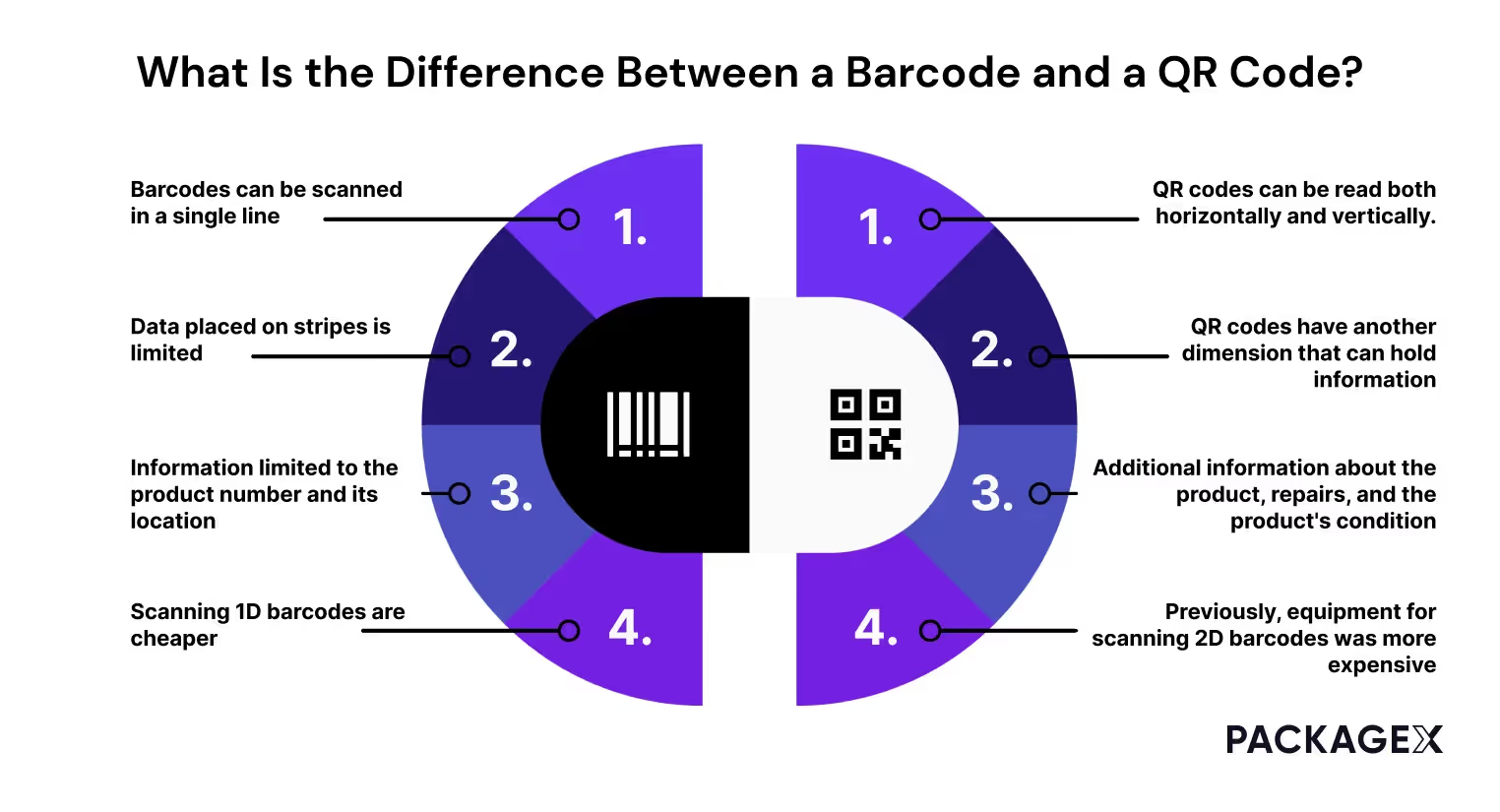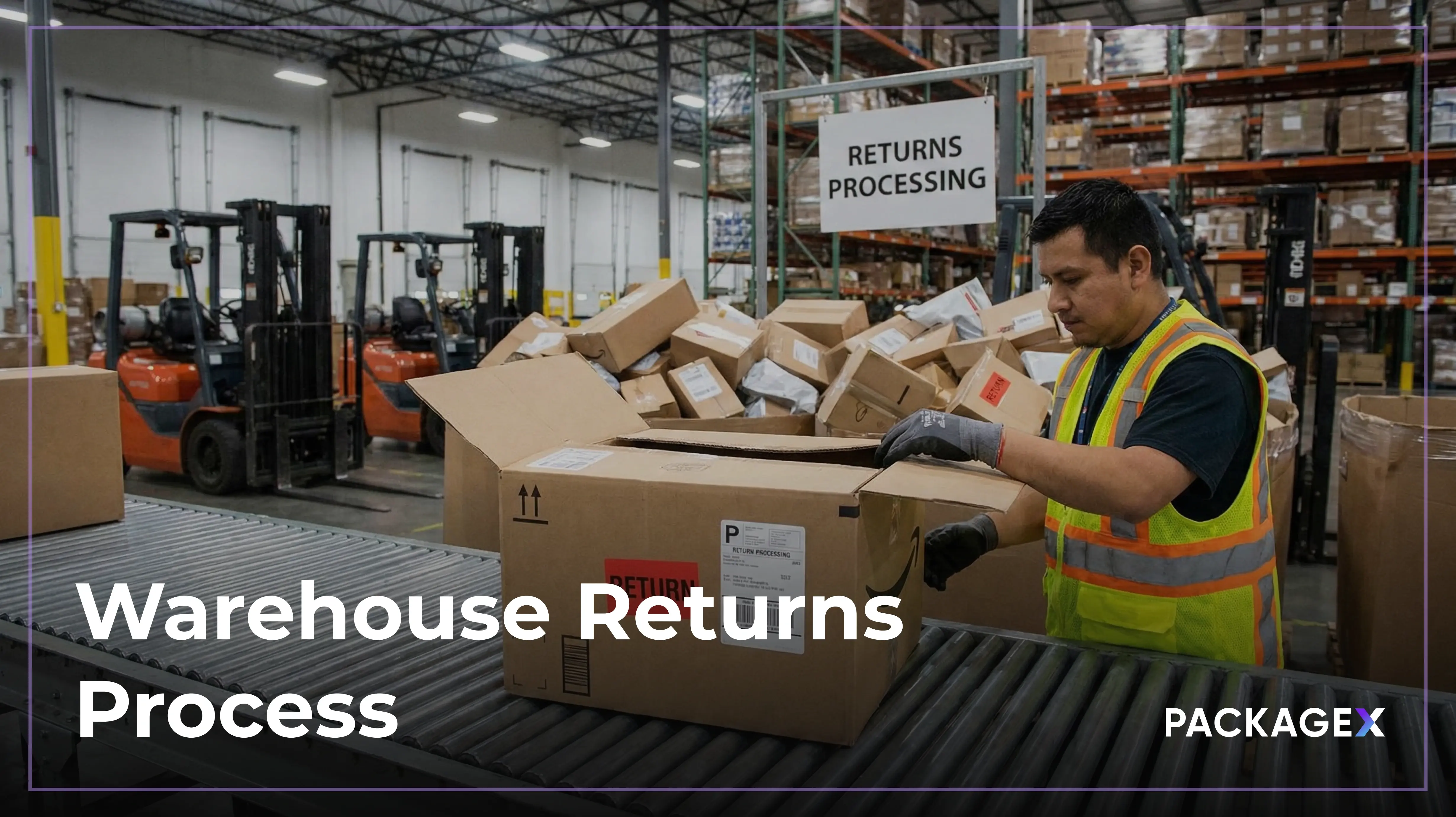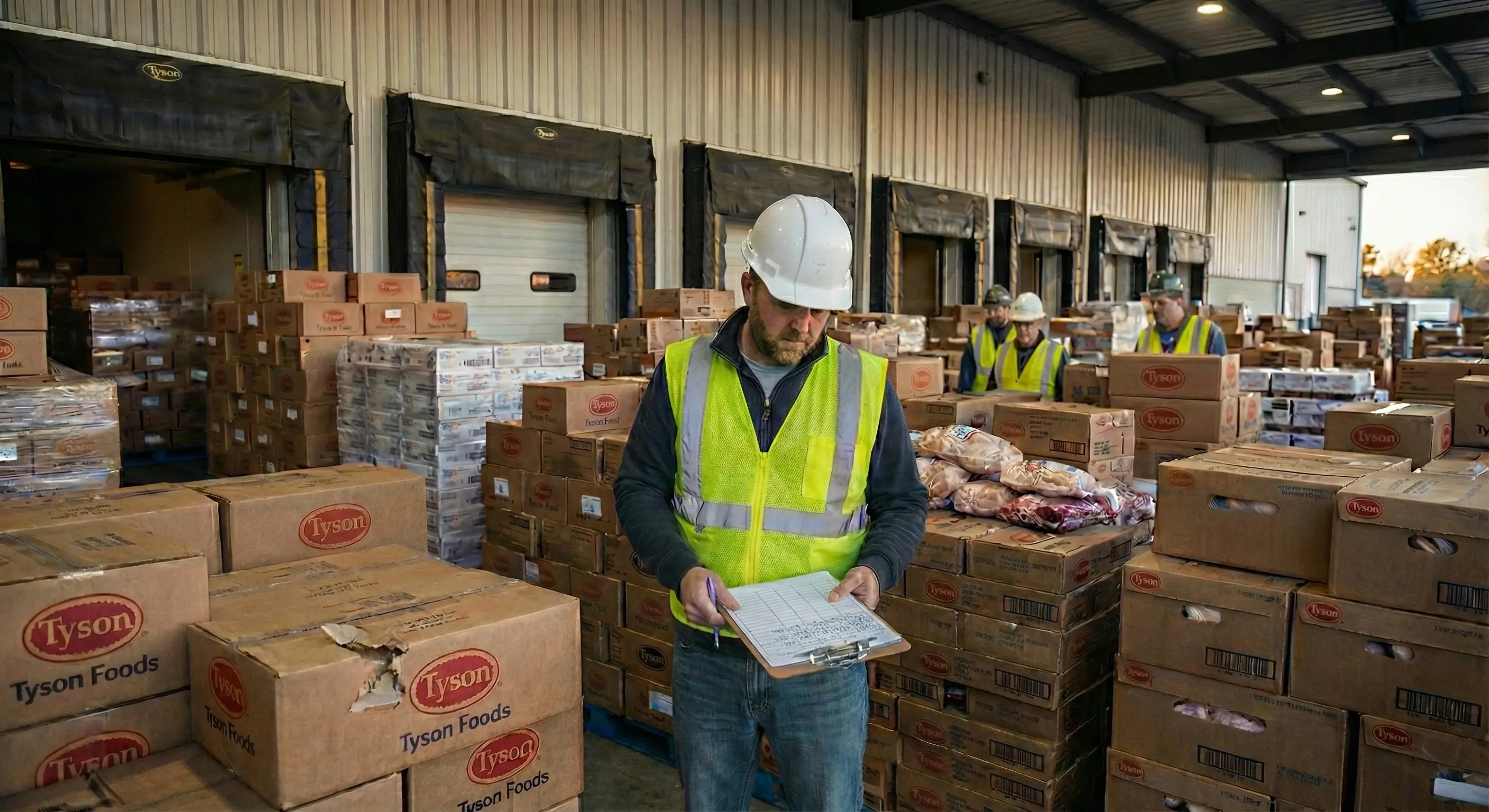If you are in the manufacturing or retail business, then you must have heard of barcode types. That bit of information comes with a lot of questions.
For example: What is a barcode? Which one is best suited for your business? How many different barcode language types are there?
We are going to answer all of your questions in this article.
A printed series of parallel lines used to enter data into a computer system is called a barcode. Shop items usually come with a label on their packaging. This label contains lines and different numbers that are used to gather information about the product.
According to Market Research Future, the global barcode software market is expected to expand significantly. The estimated projections are valued at $2.47 billion in 2025 to $5.17 billion by 2034. This growth represents a compound annual growth rate (CAGR) of 8.55%. These numbers speak for themselves.
These barcodes are scanned at the counter, and the product's price and description are displayed on the computer screen. However, there are many different types of barcodes available, which makes it difficult to identify them.
Here is a comprehensive breakdown of everything you need to know about barcodes.
What is a Barcode?
A barcode is a machine-readable image composed of a series of parallel black bars and white spaces of varying widths that encode data. Typically rectangular or square, barcodes are used for quick product identification. Also for inventory tracking and data capture. Across various industries, including retail, logistics, and healthcare. They work by using optical scanners or cameras to detect the pattern of bars and spaces. Which represent binary data that computers decode into meaningful information such as product numbers, prices, or other attributes.
How Barcodes Work?
Here’s how a barcode works:
Encoding Information
- Barcodes consist of black bars and white spaces of varying widths, where the width typically represents binary values (0s and 1s).
- The sequence of these bars encodes numeric values, often representing digits from 0 to 9, which form a unique identifier for each item.
Data Interpretation
- When scanned, a computer connected to the scanner reads the barcode pattern and matches it to a database.
- This database contains detailed information. About the item, enabling the system to perform calculations or checks to identify the exact product.
- The product information, such as name, price, size, color, and other attributes, is then displayed or used for processing.
Applications in Different Settings
- In warehouses, barcodes can encode multiple attributes. Such as item size, color, and storage location. This helps companies maintain real-time inventory visibility. It is also useful for efficiently fulfilling orders or conducting stock counts across supply chains.
- In retail inventory management, barcodes provide quick access to product details. For instance name and price, enabling fast and accurate checkout.
- Barcodes support tracking throughout a product’s entire lifecycle. From manufacturing and distribution to sales, service, and repair.
Benefits
- Barcodes automate data entry, minimizing manual errors.
- They improve speed and accuracy in inventory management.
- They provide rich data for operational efficiency and customer service.
[video:https://www.youtube.com/watch?v=6w3tdHjyYLg]
Components of a Barcode
Barcodes consist of several essential components that work together to encode and communicate data efficiently:
- Bars and Spaces:
The primary visual elements of a barcode are composed of parallel black bars and white spaces of varying widths. These represent binary data (0s and 1s) used for encoding information.
- Quiet Zone:
The clear, empty margin or white space surrounding the barcode on all sides. It ensures the scanner can distinguish the barcode from other printed information or background.
- Numbers (Human-Readable Digits):
Usually printed below the bars in linear barcodes, these digits represent the encoded data. They are presented in a human-readable format, such as product codes or prices. - Number System Digit:
In certain barcodes like the Universal Product Code (UPC), the first digit categorizes the type of product or item.
- Manufacturer Code:
A unique sequence assigned to a manufacturer or company, helping to identify the source of the product.
- Product Code:
A unique identifier created by the manufacturer to distinguish specific products or variants.
- Check Digit:
A calculated digit at the end of the barcode that validates the accuracy of the scanned data, helping to detect errors in reading.
Understanding Barcode Standards and Variations
A standard format for barcodes does not exist. However, they do come with particular characteristics depending on how they are created.
Different types of barcodes differ in the following ways:
- Size
- Capacity
- Material used
- Linearity
- Requirement of a checksum
The size of the barcode usually depends on its application and the machine used for scanning it. The capacity of a barcode refers to all the character combinations it comes with. It depends on the character set it supports.
The width of the barcode's narrowest bar can be a measure of its density. The amount of area that can be scanned on the barcode tells its linearity. Some barcode formats come with a standardized portion. To check whether the retrieved information is correct. That is called checksum.
It is used to verify that the retrieved information is correct. It is the number at the far right of the barcode. Barcode scanners perform calculations on the digits of the checksum to ensure the right results. Which typically triggers a beep sound if verified.
Understanding these different barcode types can help in choosing the most suitable barcode format for specific applications.
What Are the Most Common Barcode Types?
One of the most commonly used barcode types is UPC (Universal Product Codes). This barcode is used for labeling retail products. It's found on almost every sale item in the market and all grocery stores in the US. It consists of a 12 digit numeric-only number. Every product is assigned its unique number by GS1, making up the first six digits of the barcode. The product's manufacturer assigns the next five digits. Each product has a unique UPC that its manufacturers use for identification.
These barcodes help them digitally scan to retrieve and track the product. Many excellent management software like PackageX come with the technology to scan these barcodes. In order to track mail and packages. It helps users easily keep an eye on where their item is and when they will receive it.
Other commonly used barcode types include:
- Code 39
- Code 128
- GS1-128
- Codabar
- EAN-13 and EAN-8
- ITF-14
Code 39
Code 39 allows the use of digits and characters. Its name was derived from the fact that it could only encode around 39 characters. However, that number has now increased to 43. It is most commonly used in the automotive industry and the United States's department of defense.
Code128
This barcode was invented more recently. It can encode all the characters of the ASCII 128 character set. It can encode numbers, characters, and pronunciation marks, allowing you to use a broad range of characters. That's why it is a powerful barcode that can store almost any kind of data. Mainly, it is used in logistics, transportation and order distribution management
GS1-128
This barcode is a data carrier created, so the transfer of information between companies was more effortless. It's come with a list of application identifiers that enable it to not only encode the data but also define its meaning.
Codabar
Codabar is a symbology that is very easy to print. It is used in photo labs, US blood banks, and FedEx waybills. It encodes up to 16 characters and can be produced without the help of a computer by using consecutive numbers. It is also a self-checking barcode. Instead of scanning incorrect information, it will register inaccurate data as a wrong scan, minimizing scanning errors.
EAN-13 and EAN-8
These barcodes are usually used outside of the United States. They are commonly found on consumer products such as groceries, shoes, and clothes and are scanned at the point of sale. EAN-13 covers 13 digits, and EAN-8 consists of 8 digits. The latter is especially useful for scanning objects with small label space like candy.
ITF-14
This particular barcode is a mix between the point of sale barcodes and logistic barcodes. It uses a 14 digit number and can deal with high printing tolerances. That can be especially useful when barcodes need to be printed on cardboard. This barcode is usually used for trading products that don't need any POS (point of sale) interaction.
Different Combinations of Barcodes
Barcodes use lines of different widths to represent a 12 or 13 digit number. That is why the possible combinations it can represent can be up to 10^13 different combinations.
Barcodes are available in two different types: Linear barcodes and two-dimensional matrix barcodes.
- Linear/1D Barcode Types (One-Dimensional):
Also known as linear barcodes, these consist of parallel lines and spaces arranged horizontally. They encode information such as numbers or letters along one dimension. Common examples include UPC, EAN, Code 39, and Code 128. These are widely used in retail, logistics, and inventory systems. Their attributes include limited capacity but easy readability and compatibility with most scanners.
- Matrix/2D Barcode Types (Two-Dimensional):
These barcodes encode data using both the horizontal and vertical space. This allows for more information to be stored, including text, URLs, or images. Popular 2D barcode types include QR codes, Data Matrix, and PDF417. They offer higher capacity, smaller footprint, and support for error correction. This makes them suitable for complex applications like healthcare, and asset tracking.
There are countless ways to encode data for barcodes, and each encoding consists of different combinations. It means that barcodes will never run out!
Barcode Technology
Barcode technology is an essential tool that enables the fast and accurate capture, decoding, and processing of data encoded in barcodes.
Key Technology Components
- Barcode Printer:
Specialized printers generate barcode labels or tags. These printers vary from large, fixed units to portable wireless devices. The printer type depends on operational needs. - Barcode Scanner:
Barcode scanners are devices that read barcodes by emitting light (lasers, LEDs, or cameras) onto the barcode and detecting the reflected pattern. Common types include:
- Laser Scanners: Use laser beams to read 1D barcodes from a distance.
- CCD Scanners: Use multiple LEDs for accurate close-range scanning.
- Imager Scanners: Use cameras to capture and decode more complex 2D barcodes.
- Central Database:
A software system that links barcode data to detailed product or item records. Such as identification codes, descriptions, prices, inventory status, and location data.
How It Works
- The scanner illuminates the barcode and detects the reflected light, which varies with the pattern of bars and spaces.
- This reflected pattern is converted into electrical signals and digitized into binary data.
- The digital data is decoded based on barcode symbology standards (e.g., UPC, QR).
- The decoded data is then sent to the central database or software. Which retrieves relevant information related to the product or item.
- This process enables automated data capture and eliminating manual entry errors. It also provides instantaneous access to product details, streamlining operations.
What Is the Difference Between a QR Code and a Barcode?
For manufacturing businesses, tracking inventory is vital. That is why they use labels on their products so their customers can know where it is in the assembly line and when it will be in their hands. Customers can also use this tracking data to solve a multitude of problems.
However, companies need to decide which barcode types to use. The primary choice is between a one-dimensional barcode system or 2D barcode types like QR codes. The main differences between barcodes and QR codes are as following:
In the past, scanning 2D barcodes wasn't as cheap as scanning linear barcodes. That is because of the need to cover two dimensions instead of one. The price difference of the scanning equipment was one of the significant drawbacks of QR codes. However, that's not a problem anymore.
That's because now QR codes can quickly be scanned through mobile devices. New package tracking and mail management apps come with OCR technology that efficiently scans QR codes and helps users track their package. According to statistics, QR code usage is likely to rise by 22%.

How Can You Identify a Barcode Type?
Since there are so many different barcode types available, readers might get confused about which is which. If you do not identify barcodes correctly, you will never decide which barcode type best suits your business.
The best way to identify linear barcodes is by their start and stop patterns. They tell barcode readers where to start and stop, and comparing them can help identify different barcode types.
2D barcodes, on the other hand, can be identified by comparing shapes and finder patterns. A unique mark that exists in all barcodes of the same format is referred to as finder patterns. They can be used to identify different 2D barcodes.
An example of finder patterns is the unique square pattern in the center of every Aztec code.
How PackageX’s Inventory Management Software Transforms Your Business Efficiency
In this age speed and accuracy are key to any business success. PackageX’s inventory management software paired with advanced barcode technology revolutionizes how businesses track and manage stock. Each time a barcode is scanned, inventory updates happen automatically and in real time. This provides a crystal-clear picture of product availability and location. This barcode-based process reduces costly errors and prevents unexpected stockouts. While also helping your team fulfill orders faster and with confidence.
With PackageX’s smart barcode-based system, businesses can gain inventory visibility. Real-time data empowers efficient stock rotation, and highlights slow-moving items for timely action. PackageX’s smart solutions lowers labor costs, accelerates workflows, and enhances supply chain agility.
Harness the power of barcodes with PackageX to streamline your operations and stay ahead in today’s competitive market.
Frequently Asked Questions
Let us go through some frequently asked questions about barcodes.
Q. What do numbers on a barcode mean?
The numbers on the barcode are unique to the product you are buying. There are 12 numbers on a standard UPC-A barcode. Here is what the digits mean:
- The first digit is the system identifier that helps classify the type of product.
- Examples of standard Universal Product Codes are the digits zero, one, six, seven, and eight.
- Weighted items such as meat are identified by the number 2.
- Health-related products are identified by the number 3.
- Four is the number reserved for non-food-related items.
- Numbers five and nine are used to identify coupons.
After the first digit, there are two sets of five numbers in the middle. The first set corresponds to the manufacturer number and the second set refers to the product number. The final digit is used to scan errors and is used as a control digit.
Q. Which barcode is used on products?
The most common barcode used on products, especially in the United States and Canada, is the UPC (Universal Product Code). The UPC-A format encodes 12 numerical digits and is primarily used for labeling and scanning consumer goods at points of sale.
Q. Why should you use barcodes?
Scanning barcodes has now become easy with the right technology. Designing and printing a barcode is exceptionally cheap. Barcodes reduce the chance of human error and help users make informed decisions.
In the case of delivery tracking, order information can quickly be sent out to customers so they can schedule their day around when they need to pick up their package. Both expensive and easy to use, barcodes are an excellent option to track a variety of data. That's why smart solutions like PackageX Mailroom ensure safe package delivery, without any hassle.
Q. What are the differences between UPC and EAN barcodes?
UPC is mainly used in North America with 12 digits, while EAN is primarily used worldwide outside North America with 13 digits. Both serve similar purposes for retail item identification.
Q. What barcode types are used in shipping and logistics?
Barcodes like Code 128 and GS1-128 are commonly used in shipping, warehousing, and logistics due to their ability to encode alphanumeric data and extended product information.




